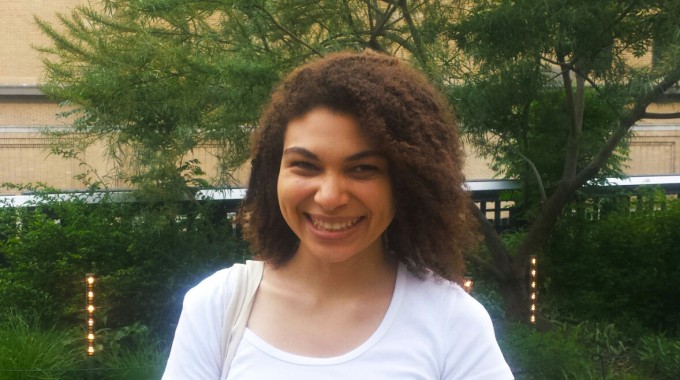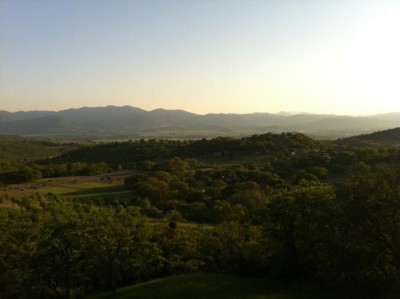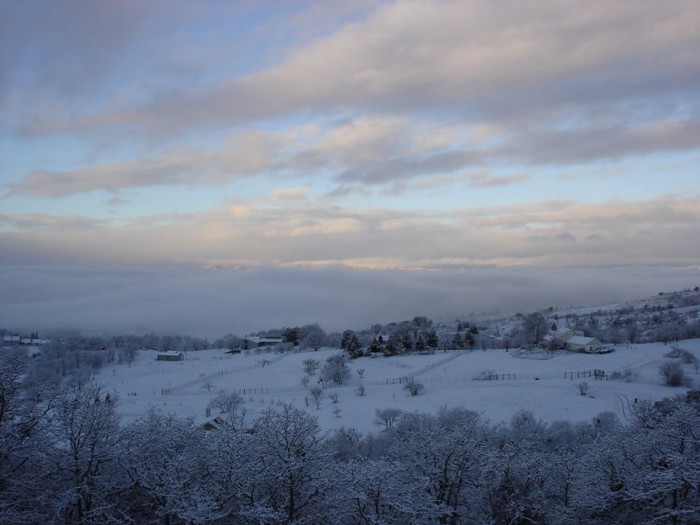If you know of a Columbia College student, faculty member, alumnus/alumna or program we should spotlight, or if you would like to submit a story, please contact:
Columbia College
Office of Communications
cc-comms@columbia.edu

“I doubt I could have grown as much personally and intellectually anywhere other than Columbia.” — Maren Killackey CC’15
During the 2014 – 2015 winter break, Maren Killackey CC’15, from Medford, Ore., a city of just over 77,000 in southern Oregon, traveled to her hometown and its surrounding area to speak about Columbia with prospective students through the Alma Mater Ambassadors program. Starting in January 2015, the Alma Mater Ambassadors Program, run by Undergraduate Admissions and in its inaugural year, sent 10 students from underrepresented areas and states — including rural areas like southern Oregon, Appalachian North Carolina and the Arizona/Mexico border — to their home counties to share their Columbia experiences with prospective students. “Each year Columbia admissions officers travel to dozens of states and countries, but we are not able to reach every community where there may be outstanding prospective Columbians,” explains Dean of Undergraduate Admissions and Financial Aid Jessica Marinaccio. “We started this new program to expand our outreach, and because we believe that some of the most effective ambassadors for the Columbia experience are our own students.” Here, Maren reflects on imparting her love of Columbia and her passion for encouraging the pursuit of higher education to high school students in Oregon’s Jackson and Josephine Counties.
It didn’t dawn on me until November that the 2014-2015 academic year would be my last at Columbia. When it did, nostalgia swiftly ensued, and I was left in a thrilling yet terrifying liminal space between “chapters” to find an outlet for my memories. At the same time, it became abundantly clear just how many of those memories Columbia had made possible.
Four years ago, in the fall of 2011, going to Columbia College at Columbia University in the City of New York had been a pipedream. Not only did that dream come to fruition, but I have since traveled to West Africa, Southeast Asia and, the most exotic of destinations, New England, thanks to funding offered through the school. As November rolled around, I recognized how grateful I was and I wanted to repay the debt.
And so, when I received an email from Undergraduate Admissions inviting me to apply for the Alma Mater Ambassadors program, wherein student representatives would travel to their home regions to give presentations to local high schools on behalf of the Admissions office, I jumped at the chance. I applied, interviewed and, a few days later, was elated to hear that I’d been selected.
My motivations for becoming an Alma Mater Ambassador were initially to bring Columbia to southern Oregon, but as I thought further, I understood that Columbia stood to gain too. Growing up, I used to ride in tractors, go to the County Fair and pick blackberries along the side of the road regularly. I knew what a wheel line was without a second thought (wheel lines are used for agricultural irrigation). When I was in high school in Medford, Ore., the only co-op I’d heard of was an agricultural supply store. There are not many of us like that even here at Columbia, a school that prides itself on diversity in every sense of the word. There need to be more.

Southern Oregon in the summertime. Photo: Maren Killackey CC’15
When my Alma Mater Ambassador tour started in January 2015, I made a point of telling the students I met in high schools near where I grew up that Columbia is a great school. But I also emphasized that it could be better with students like them. I tried to articulate a sort of mutual broadening of horizons, while also dispelling myths about life in New York. It was a challenge trying to convince kids who’d grown up on more than 50 acres of land that living in a high rise was an experience worth having, and to explain that “farm-to-table” was a dining trend, not a fact of life. But when I added that just riding in the dorm elevators you hear languages you didn’t know existed and that only in New York could you order chapati at midnight, their largely skeptical expressions showed glimmers of excitement.
I spoke at a total of 10 schools across Oregon’s Jackson and Josephine Counties, and at each one I saw potential future Columbians. However, my experience also laid bare the unfortunate lack of awareness about financial aid. Going into my ambassadorship, I knew about undermatching -- where high school students from low-income families who score in the top percentiles of standardized tests still don’t apply to selective schools -- and wanted to make it clear to students that if you’re the type of student Columbia wants on campus, financial aid would come through.
“Just look at me,” I’d tell them, adding that I ended up paying for Columbia half of what I would have paid for the University of Oregon. I met a number of students who said that hearing that figure made all the difference, but I met many more who said they wished they’d known sooner; maybe they would have done high school differently.
By the tenth school, my presentations stopped centering on, “What can you do for Columbia, what can Columbia do for you,” and became more about higher education in general. I felt that by just focusing on the experience of being at college, I was having more of an impact.
 The snowy winter of southern Oregon. Photo: Mary Arnstad, courtesy Maren Killackey CC’15
At one school, for instance, I was the first representative from any university in the Ivy League to visit. Though the students were all very bright individuals who cared deeply about their education and dreamt of going to college, many I spoke to hadn’t realized that higher education was an option for them either academically or financially and had dropped out of high school at one point or another. This is not uncommon in Oregon, where the high school graduation rate is among the lowest nationally. After my presentation, a first-year student approached me and divulged that she hadn’t seriously considered going to college because of the expense. She hadn’t been doing well in her studies, but now knew that she could spend time catching up so that she could try to get a generous scholarship from a school in the region. Even though I hadn’t forged a future Columbian, I was beaming: it was apparent that just by my being there, I had made a difference.
The snowy winter of southern Oregon. Photo: Mary Arnstad, courtesy Maren Killackey CC’15
At one school, for instance, I was the first representative from any university in the Ivy League to visit. Though the students were all very bright individuals who cared deeply about their education and dreamt of going to college, many I spoke to hadn’t realized that higher education was an option for them either academically or financially and had dropped out of high school at one point or another. This is not uncommon in Oregon, where the high school graduation rate is among the lowest nationally. After my presentation, a first-year student approached me and divulged that she hadn’t seriously considered going to college because of the expense. She hadn’t been doing well in her studies, but now knew that she could spend time catching up so that she could try to get a generous scholarship from a school in the region. Even though I hadn’t forged a future Columbian, I was beaming: it was apparent that just by my being there, I had made a difference.
I doubt I could have grown as much personally and intellectually anywhere other than Columbia, but I recognize that everyone is different and for some, the environment here might not be the right fit. So though I wish that every ambitious high school senior who thinks critically and has an insatiable curiosity about the world would choose to make Columbia their home, I’ve come to accept -- albeit begrudgingly — that it’s fine if they don’t. Columbia is wonderful, but it’s one of 3,000 colleges in the U.S. and, ultimately, it’s more important that students know that their dream schools exist and that they know how to make their educational dreams reality. As an Alma Mater Ambassador, I’m humbled to have played a small part in that process for even just a few high schoolers.
Maren Killackey CC’15, originally from Medford, Ore., is a political science major.